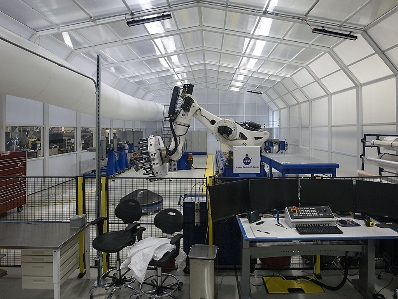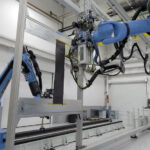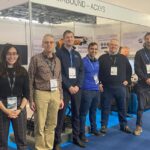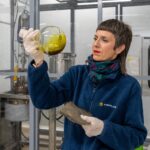NASA researchers have constructed a clean room to support the Integrated Structural Assembly of Advanced Composites robot with a mission to discover new methods of composite material development for air and space vehicles.
“The idea was to create a capability that’s a unique research asset for the agency,” said Brian Stewart, NASA Langley Research Center engineer.
“Minimizing foreign particles is really important when building flight hardware, but also when doing research,” said Dawn Jegley, ISAAC project lead at NASA’s Langley Research Center in Hampton, Virginia. “We don’t want contaminants in the air to mess something up and mislead us in our studies.”
But ISAAC needs more than pure air from its clean room. The new enclosure also gives researchers the ability to control air temperature and humidity so precisely it can be used as a variable in experiments.
For instance, researchers could ask ISAAC to build a panel of composite material while holding the temperature inside the clean room at exactly 70 degrees Fahrenheit (21 Celsius). While holding the temperature steady, they could build panels at any relative humidity level between 50 and 80 percent. Testing and inspection could then determine how those humidity levels affected the end product.
“We don’t know anyone else who is doing that right now,” said Brian Stewart, an engineer at NASA Langley who was part of the team that brought ISAAC to the center. “As a national lab, we created a capability that can do this kind of deep study and get a real firsthand understanding that we can disseminate to the composites community at large.”
ISAAC stands for Integrated Structural Assembly of Advanced Composites and it’s been a part of Langley’s research arsenal since January 2015. The robot is being used to improve methods of manufacturing components made of composite materials for use in aircraft, spacecraft, launch vehicles and other systems.
But the robot itself was always envisioned as one part in a suite of elements working in concert.
“The idea was to create a capability that’s a unique research asset for the agency,” said Stewart, who with Chauncey Wu and Rob Martin advocated for ISAAC in 2012. “The entire plan was to have the robotic platform as a motion base, have the heads as processing alternatives and then have the environmental capability to do this kind of stuff that we haven’t seen before.”













